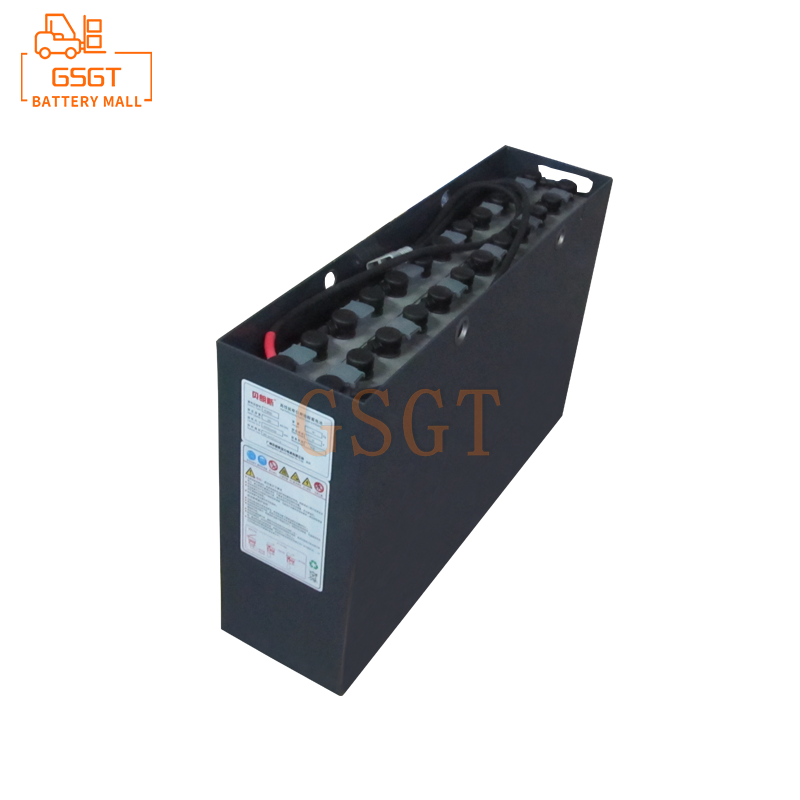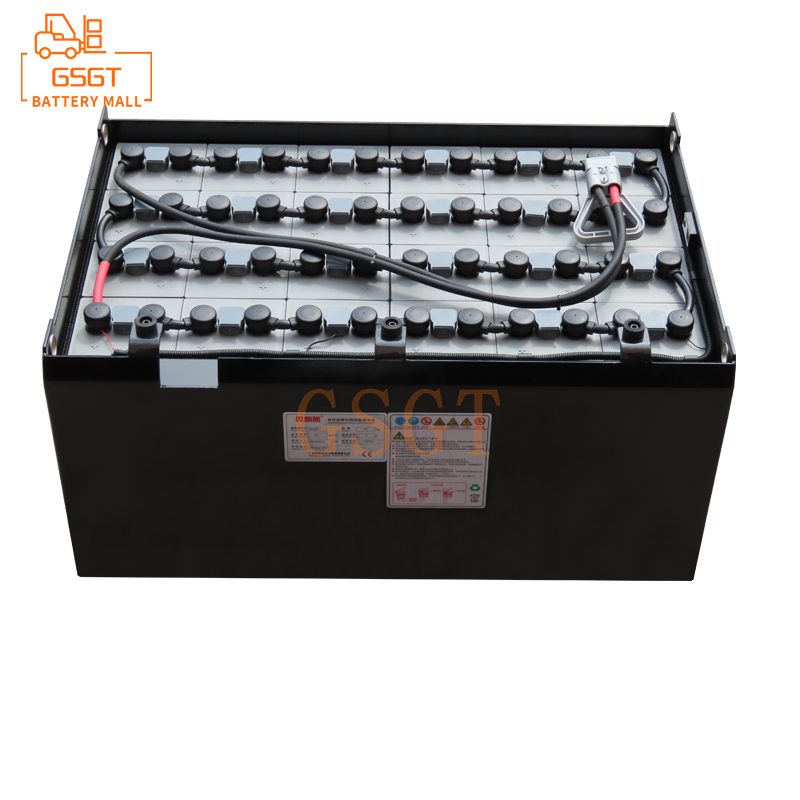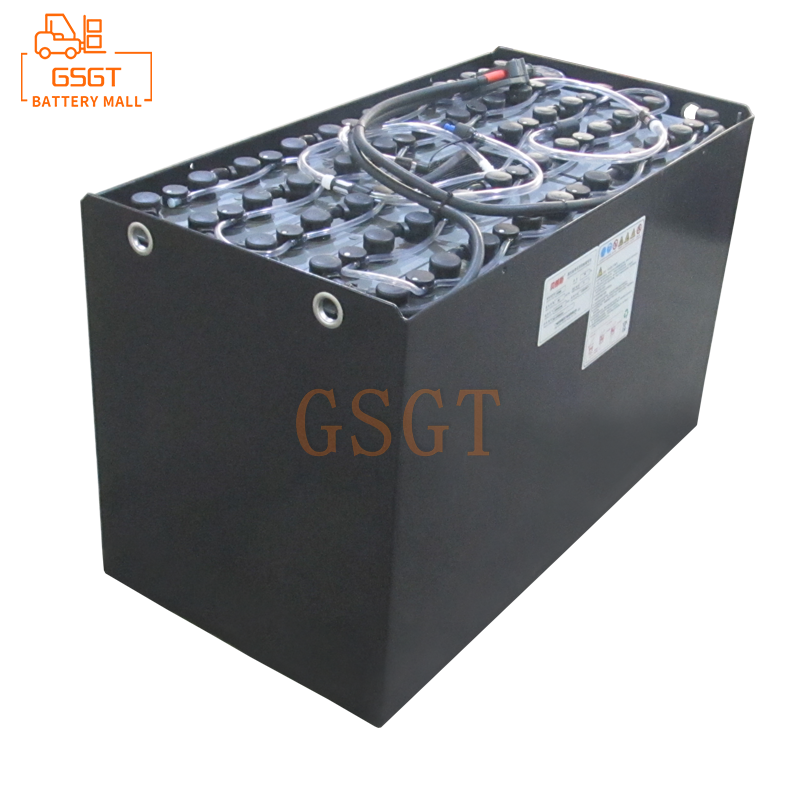Time:2025-05-24 16:53:52
Browse:660
In the modern logistics and warehousing industry, forklifts, as indispensable handling equipment, the performance and lifespan of their power source - lead-acid batteries - directly affect the operational efficiency and costs of enterprises. However, during the long-term use of forklift lead-acid batteries, the problem of battery sulfation gradually emerges, becoming a key factor restricting the battery's service life. As an emerging battery repair technology equipment, the pulse repair instrument provides new ideas and methods for solving the problem of battery sulfation and extending the service life of batteries. An in-depth exploration of the application of sulfation repair and pulse repair instruments for forklift lead-acid batteries is of great practical significance for improving the utilization efficiency of forklifts and reducing the operating costs of enterprises.
1. Causes and Hazards of Sulfation in ForkLift Lead-Acid Batteries
(1) Causes of vulcanization
The working principle of lead-acid batteries is based on the reversible transformation of lead sulfate during the charging and discharging process. Under normal charging and discharging conditions, the active substances on the battery plates undergo a chemical reaction with sulfuric acid to form lead sulfate. However, when the battery shows the following situations, sulfation is prone to occur:
Long-term insufficient charging: When forklifts operate at high intensity, if the charging time is not sufficient or the charging voltage is unstable, the lead sulfate on the battery plates cannot be completely converted into active substances and will gradually form large and hard lead sulfate crystals that adhere to the surface of the plates, causing battery sulfation.
Over-discharge: When the forklift is overloaded or operates for too long, the battery power is excessively consumed, and a large amount of lead sulfate will be produced on the negative plates. If these lead sulfates are not charged and converted in time, they will crystallize and grow, forming irreversible sulfides.
Electrolyte drying up: During the battery's operation, due to water evaporation or electrolyte leakage, the electrolyte level drops, exposing the upper part of the plates to the air and reacting with oxygen, causing lead sulfate to crystallize and subsequently leading to sulfation.
Low-temperature environment: In a low-temperature environment, the chemical reaction rate inside the battery slows down, the conversion efficiency of lead sulfate decreases, and it is easier to form sulfides. Especially when forklifts are used in cold regions, the probability of battery sulfidation increases significantly.
(2) Hazards of vulcanization
Battery sulfation can cause many serious hazards to forklift lead-acid batteries:
Capacity decline: The coarse lead sulfate crystals formed by sulfidation occupy the active material space on the plates, reducing the effective area involved in electrochemical reactions, lowering the battery's energy storage capacity, and shortening the forklift's driving range.
Increased internal resistance: The presence of sulfides increases the internal resistance of the battery, causing severe heat generation during charging and discharging. This not only consumes a large amount of electrical energy but also accelerates the aging and damage of other components inside the battery.
Reduced charging and discharging efficiency: Due to the obstruction of sulfides, the battery is difficult to accept sufficient electricity during charging and cannot release all the stored electrical energy during discharging. The charging time is prolonged, while the working time is shortened, seriously affecting the working efficiency of the forklift.
Shortening battery life: Continuous sulfation will cause the active substances on the battery plates to constantly fall off, gradually corroding the plates, eventually leading to the battery being unable to work normally, premature scrapping, and increasing the equipment maintenance costs of enterprises.
2. Working Principle of Pulse Repair Instrument
The pulse repair instrument is a battery repair device based on modern electronic technology. Its core principle is to use high-frequency pulse waves to repair sulfated lead-acid batteries. Specifically, the pulse repair instrument breaks the stable structure of lead sulfate crystals on the battery plates by sending a series of pulse signals of specific frequencies, widths and amplitudes to the battery, causing them to redissolve and participate in electrochemical reactions.
When the pulse repair instrument is in operation, the high-frequency pulse waves it generates will create instantaneous high voltage and large current inside the battery. These pulse signals can impact lead sulfate crystals, causing tiny cracks on their surface. With the continuous action of the pulse signal, the crack kept expanding, eventually leading to the breakage of lead sulfate crystals and their dissolution in the electrolyte. Meanwhile, the pulse wave can also activate the active substances on the battery plates, restoring their electrochemical reaction capacity, thereby achieving the purpose of repairing battery sulfation.
In addition, the pulse signal of the pulse repair instrument also has the function of eliminating battery polarization. During the charging and discharging process of the battery, polarization occurs on the surface of the plates, resulting in an increase in the internal resistance of the battery and a decrease in the charging and discharging efficiency. The pulse signal of the pulse repair instrument can neutralize polarized charges, reduce the internal resistance of the battery, improve the charging and discharging efficiency of the battery, and further enhance the performance of the battery.
3. Specific Methods for Repairing Lead-acid Batteries of Forklifts Using Pulse Repair Equipment
(1) Preparatory work before restoration
Check the battery status: Before using the pulse repair instrument, a comprehensive inspection of the lead-acid battery of the forklift is required. First, observe whether there is any damage or leakage in the battery casing. Secondly, measure parameters such as the voltage and internal resistance of the battery to determine the sulfation degree and overall performance of the battery. Finally, check the liquid level height and density of the electrolyte. If the liquid level is too low, distilled water or special lead-acid battery replenishment solution should be added to adjust the density of the electrolyte to an appropriate range.
Select the appropriate repair instrument: According to the specifications and capacity of the forklift's lead-acid battery, choose a matching pulse repair instrument. The parameters of the output pulse signals and the repair power of different models of pulse repair instruments vary. Generally speaking, a repair instrument that can provide sufficient pulse energy and has multiple repair modes should be selected to meet the repair requirements of batteries with different degrees of sulfation.
Prepare safety protection equipment: When operating the pulse repair instrument, it is necessary to wear insulating gloves, goggles and other safety protection equipment to avoid electric shock and electrolyte splashing onto the skin or eyes, ensuring personal safety during the operation process.
(2) Repair Process
Connect the repair device: Correctly connect the positive and negative output terminals of the pulse repair device to the positive and negative terminals of the battery respectively. When connecting, be sure not to reverse the polarity; otherwise, it may damage the repair instrument and the battery. After the connection is completed, turn on the power switch of the repair instrument and enter the repair mode selection interface.
Select the repair mode: Choose the appropriate repair mode based on the degree of sulfation of the battery. For batteries with mild sulfation, the conventional repair mode can be selected. For moderately or severely sulfated batteries, the deep repair mode or pulse activation mode should be selected. When choosing the repair mode, you should refer to the user manual of the repair instrument and operate according to the instructions.
Start repair: After selecting the repair mode, click the Start repair button. The pulse repair device will then send pulse signals to the battery for repair. During the repair process, closely observe the display screen of the repair instrument to check the changes in repair parameters, such as pulse frequency, pulse width, and repair current. Meanwhile, measure the voltage and internal resistance of the battery at regular intervals and record the repair effect.
Repair time control: The length of the repair time depends on the degree of sulfation and capacity of the battery. Generally speaking, the repair time for batteries with mild sulfation is 12 to 24 hours, for those with moderate sulfation it is 24 to 48 hours, and for those with severe sulfation, it may take more than 48 hours or even longer. During the repair process, do not stop the repair too early to avoid the vulcanization problem not being completely solved. However, it should not be over-repaired either, otherwise it may cause new damage to the battery.
(3) Post-repair treatment
Charging and inspection: After the repair is completed, use the accompanying charger to charge the battery and fully charge it. After the charging is completed, measure the battery's voltage, internal resistance, capacity and other parameters again and compare them with the data before the repair to evaluate the repair effect. If all the parameters of the battery return to the normal range, it indicates that the repair is successful. If the ideal state is still not achieved, it can be considered to carry out the repair again.
Adjust the electrolyte: Based on the test results, check whether the density and liquid level height of the electrolyte are appropriate. If the density of the electrolyte is too high or too low, it can be adjusted by adding distilled water or sulfuric acid. If the liquid level is too low, an appropriate amount of distilled water needs to be added to make the liquid level height reach the specified standard.
Installation and usage: Reinstall the repaired battery onto the forklift and conduct an actual usage test. During the usage process, pay close attention to observing the forklift's range, power performance and other indicators to ensure that the battery can work normally and meet the usage requirements of the forklift.
4. Comprehensive Strategies for Extending the Service Life of Forklift Lead-acid Batteries by Using Pulse Repair Devices
(1) Regularly carry out preventive repairs
To effectively prevent battery sulfation and extend the battery's service life, it is recommended to carry out preventive repairs on the lead-acid batteries of forklifts at regular intervals (such as every 3 to 6 months). Even if the battery has not yet shown obvious sulfation symptoms, preventive repair can remove the tiny lead sulfate crystals formed early on the plates, prevent them from growing further, maintain the activity of the battery plates, and improve the charging and discharging performance and service life of the battery.
(2) Optimize charging management
Standardize charging operations: Strictly follow the battery's user manual for charging operations to avoid overcharging and undercharging. After each use, the battery should be charged in time to ensure it is fully charged before the next use. Meanwhile, control the charging time to avoid overcharging for a long time. Generally, the charging time should not exceed 8 to 10 hours.
Choose the right charger: Use a high-quality charger that matches the battery specifications. The charger should have functions such as overcharge protection, overcurrent protection, and short-circuit protection, and be able to automatically adjust the charging current and voltage according to the battery's charging status to ensure a safe and efficient charging process.
(3) Strengthen daily maintenance and upkeep
Keep the battery clean: Regularly clean the battery casing and terminals to prevent the accumulation of dust and debris, and avoid self-discharge of the battery due to the conductivity of dust. At the same time, check whether the connection of the terminal posts is firm. If it is loose, tighten it in time to ensure that the electrical connection of the battery is good.
Monitor the status of the electrolyte: Check the liquid level height and density of the electrolyte once a week. If the liquid level is too low, add distilled water or special supplementary solution in time. Regularly measure the density of the electrolyte and adjust it to an appropriate range based on changes in seasons and usage environments.
Avoid using in harsh environments: Try to avoid using the forklift for a long time in high temperature, low temperature, humidity and other harsh environments. In high-temperature environments, it is necessary to pay attention to cooling the battery to prevent it from overheating. In low-temperature environments, insulation measures can be taken, such as installing insulation covers on batteries, to enhance their working performance and reduce the occurrence of battery sulfation.
5. Analysis of Practical Application Cases
A certain logistics and warehousing enterprise has 20 electric forklifts. During the operation, it was found that the battery range of some forklifts was significantly shortened and the charging time was prolonged. After testing, it was found that these batteries had varying degrees of sulfation problems. The enterprise attempted to use a pulse repair instrument to repair these sulfurized batteries.
Before the repair, a comprehensive inspection and parameter measurement of the battery were carried out, and the appropriate repair mode and repair time were selected based on the degree of sulfation of the battery. After the repair, the battery parameters were measured again. It was found that the voltage, internal resistance and other indicators of most batteries had been significantly improved, and the capacity had also recovered to 80% - 90% of the original. After the repaired battery was installed back on the forklift for use, both the forklift's range and power performance were significantly improved, meeting the daily operation needs of the enterprise.
By using the pulse repair instrument to repair the vulcanized batteries, the enterprise not only extended the service life of the batteries, reduced the cost of battery replacement, but also improved the utilization efficiency of forklifts and lowered the operating costs of the enterprise. This actual case fully demonstrates the effectiveness and practicality of the pulse repair instrument in the vulcanization repair and service life extension of forklift lead-acid batteries.
6. Summary and Outlook
The sulfation problem of lead-acid batteries in forklifts is an important factor affecting the normal use of forklifts and the operating costs of enterprises. As an advanced battery repair technology device, the pulse repair instrument, through its unique high-frequency pulse wave principle, can effectively solve the battery sulfation problem and significantly extend the battery's service life. In practical applications, the rational use of pulse repair instruments, combined with optimized charging management and strengthened daily maintenance and other comprehensive strategies, can further enhance the performance and reliability of batteries, save a large amount of equipment maintenance costs for enterprises, and improve production efficiency.
With the continuous advancement of technology, the technology of future pulse repair instruments will become more mature and complete, and may have more intelligent repair mode selection, more precise parameter control and more efficient repair effects. Meanwhile, as the requirements for the performance and lifespan of lead-acid batteries continue to rise, related repair technologies and maintenance methods will also be constantly innovated and developed, providing a more powerful guarantee for the sustainable use of forklift lead-acid batteries. Enterprises should closely follow the development trends of battery repair technology, actively apply new technologies and methods, improve the management level of lead-acid batteries for forklifts, reduce operating costs, and achieve sustainable development of the enterprise.

$1060

$2180

$3070

$3050

MESSAGE
Professional And Efficient
Security
Affordable Price
Professional Services